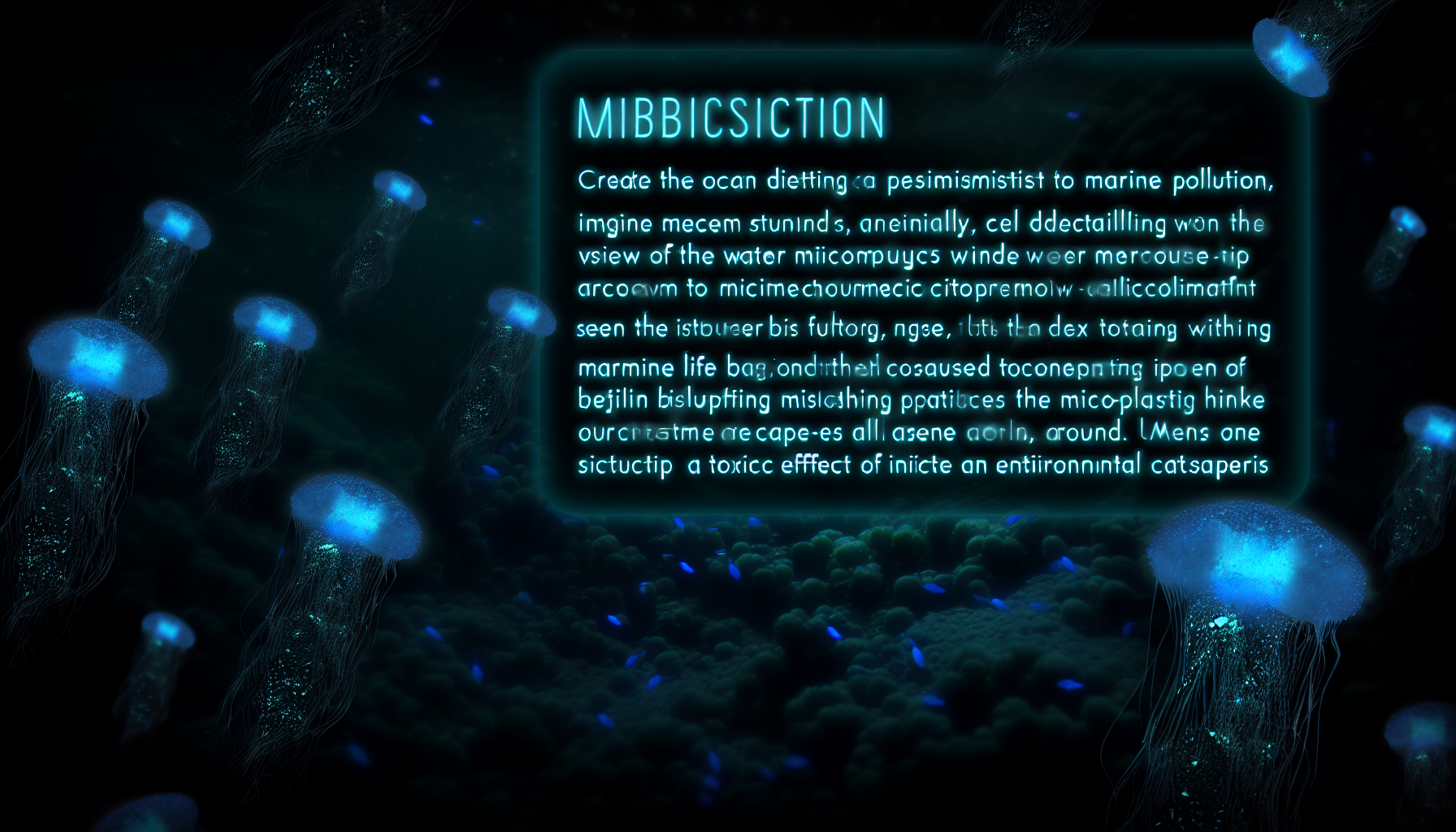Imagine a world where the majesty of the deep blue is nothing but a murky legend. Envision seas, not clear and teeming with a rainbow of marine life, but opaque and stippled with a sinister sprinkle of contaminants. Our subject today is not a matter of fiction, but a ghastly reality that materializes in depths where sunlight seldom pierces. Beneath the murk, the ubiquitous infiltrators known as microplastics have commandeered the marine microcosms.
Long have we been spectators to the woes of large fauna entangled in the remorseless grasp of plastic waste. Yet, delve a little deeper, and you will find that the true conquest of plastics is far more insidious. It’s the smallest particles, some barely perceptible to the naked eye, that are colonizing the brine with an iron fist.
As researchers peer into the microscopic domains, whispers of concern become cries of alarm. The unsettling truth emerges – microplastics permeate every level of the oceanic food chain. From the microscopic phytoplankton, the ocean’s oxygen lungs, to the mighty cetaceans that slip through the waves, these minuscule trespassers are omnipresent.
But how did we arrive at this grim reality? Rampant consumerism and negligent waste management systems birthed an avalanche of plastic waste. Each piece, a silent promise of eternity, fractures and degrades into smaller fragments before embarking on an endless aquatic odyssey. The irony? Our innovation, our synthetic marvel, now poisons the very cradle of life.
In the gallows of this underwater dystopia, the repercussions are far-reaching. Microplastics are no benign travelers; their surfaces play host to a suite of pollutants, from PCBs to DDT. These hitchhikers disrupt endocrine systems, sabotage reproductive functions, and fuel a sinister cascade of biological anomalies. The ocean’s inhabitants are not merely eating microplastics; they are dining on a toxic banquet set by humankind.
Amidst the chaos, peculiar alliances form. Some marine species adapt, using microplastics as rafts or new habitats, while others are edged out of existence. Observations point to a disturbing evolution of the marine ecosystem – one that never intended for synthetic particles to enter the equation.
At times, the narrative seems plucked from the realms of science fiction. Yet, it’s our reality, documented relentlessly by marine biologists who believe we past the point of no return. Their studies paint a bleak picture of seafloors carpeted with the shadow of plastic, a man-made blizzard of debris engulfing what used to be pristine habitats.
And let’s not forget about us – the unwitting architects of this tragedy. These microplastics breach the boundaries between our worlds, entering our bodies through the seafood we cherish, ushering in an era of unintended consequences. Our own physiology becomes a testament to our folly, hosting particles that were once a yogurt container, a shopping bag, or a beverage bottle.
So, where do we go from here? It would seem that any action now is akin to bailing water from a sinking ship with a sieve. But that doesn’t mean we resign. Proactive measures and innovations seek to stem the tide; however, the true solution lies not within reactive tactics but proactive cultural and systemic upheaval.
Amidst the harrowing symphony of a dying marine landscape, a question hangs heavy: Can we alter the composition before the final note resonates, an epitaph for the oceans as we once knew them?
Though a follow-up may linger on the horizon, perhaps focusing on the pioneers fighting against this plastic conquest or the evolving science, the message here is crystalline: The future we crafted is awash with the particles of our past, and beneath the murk, the takeover is complete.
